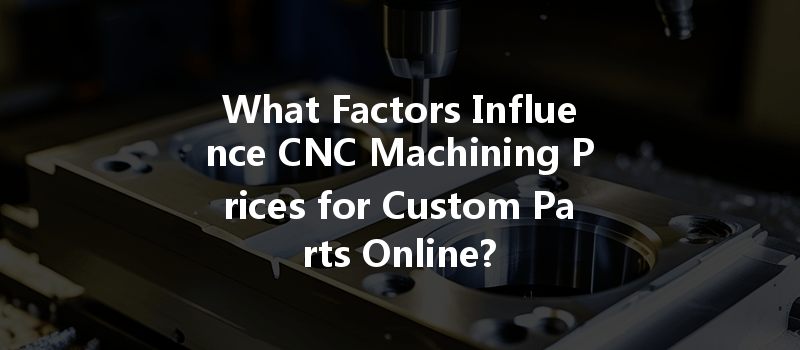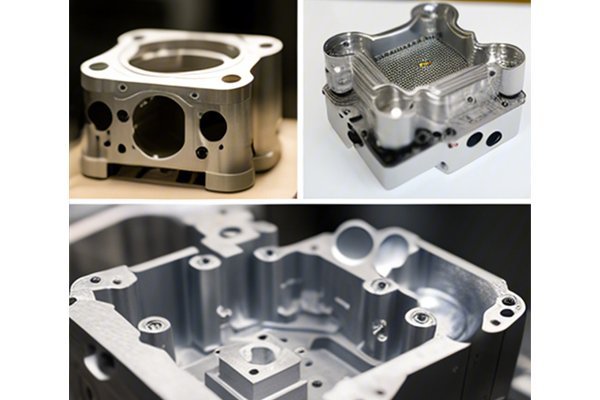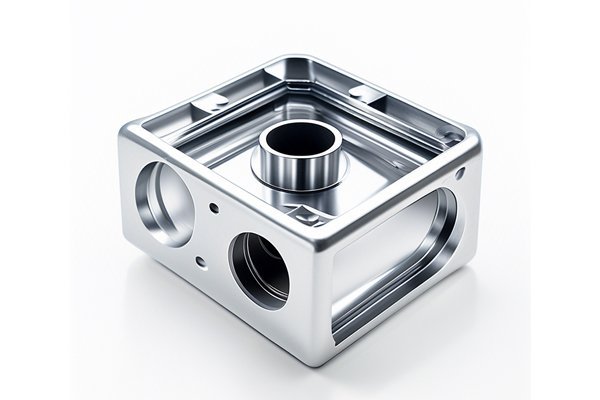Did you know that the global CNC machining market size was estimated at approximately $70 billion in 2021 and is expected to grow at a CAGR (Compound Annual Growth Rate) of 6.4% from 2022 to 2030? As industries continue to evolve and demand for precision parts surges, understanding the pricing dynamics of CNC machining becomes critical for both manufacturers and buyers. Whether you’re a startup looking for your first set of custom parts or an established business aiming to optimize your supply chain, knowing what influences CNC machining prices is essential.
In this comprehensive blog post, we’re going to delve deep into various factors that influence CNC machining prices for custom parts online. From material selection to machining processes, and even geographic considerations, we’ll explore all the elements you need to factor in when budgeting for CNC machining.
—
—
What is CNC Machining?
CNC (Computer Numerical Control) machining is a manufacturing process that involves the use of computers to control machine tools. This technology is widely utilized for creating various components in industries such as automotive, aerospace, medical devices, and electronics. Through this precision manufacturing technique, complex shapes can be accurately produced.
The Role of CNC in Modern Manufacturing
CNC machining is touted for its ability to produce high volumes of parts with unparalleled accuracy and consistency. A staggering percentage of manufacturers have pivoted to CNC processes, minimizing human error while maximizing efficiency. In fact, studies show that CNC machining can reduce manufacturing time by up to 50% compared to traditional manual methods.
—
When considering the costs associated with CNC machining, various factors come into play:
Material Types
One of the most significant variables affecting CNC machining pricing is the choice of material. Here’s a quick overview:
By understanding the pricing implications of different materials, businesses can make more informed decisions about which materials to use for their projects.
Complexity of Design
The intricacy of a design can heavily influence the final pricing. Features such as deep cavities, angled cuts, or intricate geometries typically require specialized tooling and longer machining times. Here are a few considerations:
Tolerance and Precision Requirements

Different projects necessitate varying levels of precision. The tightness of the tolerances required can have a considerable impact on CNC machining costs.
Production Volume
Production volume is another vital factor. Here’s how it breaks down:
Knowing the estimated annual production run helps manufacturers optimize cost calculations, ensuring the best possible pricing per unit.
Machine Setup and Labor Costs
The time it takes to set up machines and the labor costs involved directly affect the overall price. Key points to consider are:
—
Differences between Regions
Geographic factors play an essential role in determining CNC machining prices. Some regions have lower operational costs due to favored economic conditions, while others may demand higher compliance costs or wages.
The Effect of Labor Costs and Regulations
Labor costs vary widely across different countries and can significantly influence the pricing of CNC machined parts. For instance, countries with lower labor costs, such as China, are often seen as attractive manufacturing locations, especially for bulk orders. However, regulations around standards, quality, and production can offset some of those savings.
—
Comparing Online Services
The digital marketplace offers an array of CNC machining services, making it more important than ever to compare and contrast offerings. Considerations include:
Pricing Transparency in the Online Market
Understanding pricing models helps companies select the right providers based on their needs. Some services offer fixed pricing, while others may utilize dynamic pricing based on fluctuating demand and material costs.
—
Maximizing cost efficiency in CNC machining doesn’t have to compromise quality. Here are several strategies businesses can employ:
Smart Material Selection
Choosing the right material is fundamental. Opting for readily available materials or those with similar properties to high-cost options can help manage expenses.
Simplifying Designs
Streamlining your design reduces complexity. This can be achieved by eliminating unnecessary features or optimizing geometries to make machining easier and save costs.
Leveraging Automation
Incorporating automation can help optimize processes and reduce labor costs over time. Utilizing robotics within your machining process enhances consistency and reduces the timeline for production.
—
Successful Cost Management in CNC Machining
Understanding real-world examples of companies that effectively managed their CNC machining costs can provide practical insights for others.
Lessons Learned from Pricing Failures
Conversely, examining the mistakes of others can offer crucial lessons:
—
Understanding the key factors influencing CNC machining prices for custom parts online is not merely a matter of budgeting; it’s a critical part of aligning manufacturing capabilities with market demands. Throughout this blog, we examined the many layers—material selection, design complexity, precision requirements, geographic impacts, and the diverse landscape of online services—that come together to form the pricing structure of CNC machining.
Reducing costs without sacrificing quality requires strategic thinking, from material choice and design simplification to leveraging the latest technologies. Businesses that educate themselves about these significant factors can make informed decisions, leading to better pricing and more successful procurement of CNC machined parts.
As the CNC machining landscape continues to evolve, staying informed will empower businesses and professionals alike to make smart choices, enhancing operational efficiency and ensuring competitiveness in an ever-changing market.
—
Why This Blog is Important
Understanding CNC machining pricing dynamics isn’t just about saving money but positioning yourself for sustainable growth in a competitive environment. The lessons learned here can influence your operational strategy significantly, profoundly impacting productivity and profit margins.
If you’re involved in manufacturing or product design, taking the time to analyze these factors can yield substantial rewards. It’s essential to carry this knowledge forward—it may be the difference between success and stagnation in your future CNC projects.






